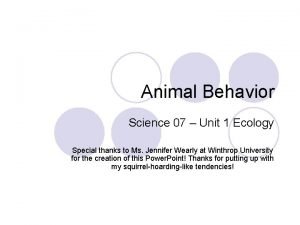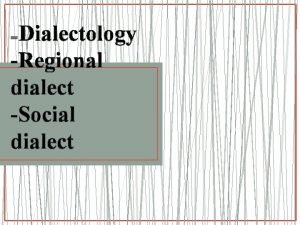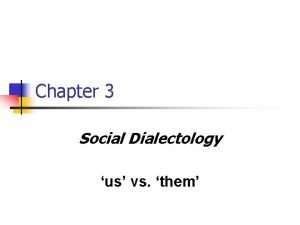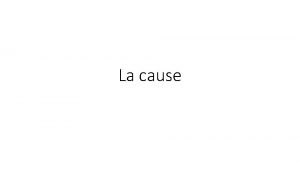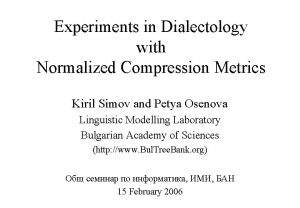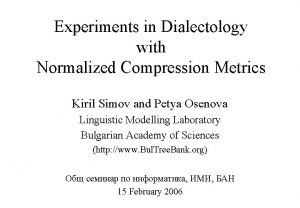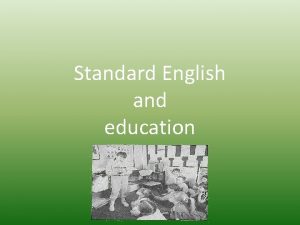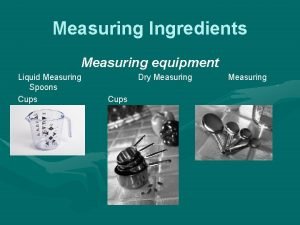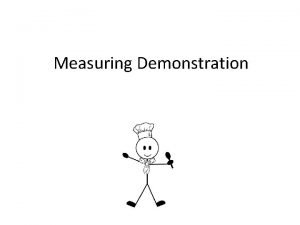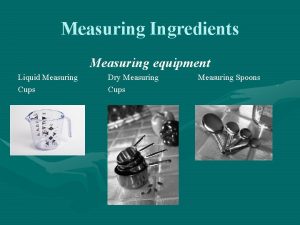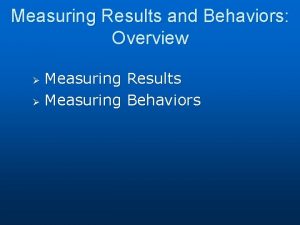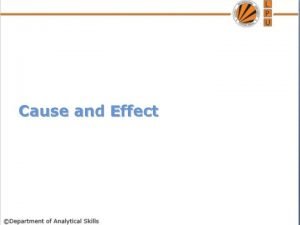Social Dialectology Ch 3 l Measuring the Cause
















- Slides: 16

Social Dialectology Ch. 3 l Measuring the Cause of Variation l Defining a Linguistic Variable l Social Factors Related to Variation l Identifying Variation in Spoken and Written Texts

Various Views of Language Variation Earlier Explanations l Dialect Mixture: Implies the coexistence in one locality of 2 or more dialects which enables a speaker to draw on one dialect at one time, and on the other dialect(s) on other occasions. l Free Variation: Refers to the random use of alternate forms within a particular dialect. Labov’s Variationist Theory l Language involved ‘structured heterogeneity. ’ l Language contained systematic variation which could be characterized and explained by patterns of social differentiation within speech communities.

Terminology of Dialectology l Linguistic Variable: Any single feature of language that could be realized by choice; can be phonological, lexical, morphological, etc. Variant is a term for different ways the feature is used. l Hypercorrection: When the lower middle class uses more of an elite form than the high-status group. It reflects their desire to distance self from working class. l Overt Prestige: Use of linguistic variants to show higher social status. l Covert Prestige: Working class speech that conforms to local values and norms instead, in order to mark solidarity. l Ethnolect: A variety of language that differs from the general patterns of wider society, based on a sense of identity through ancestry, religion, and culture. l Vernacular: The least self-conscious style of speech used in relaxed, informal situations. This style shows more regular rules of variation.

Fieldwork Methods: Measuring Causes of Variation l. Sociolinguistic Interview l. Participant Observation l. Anonymous Surveys l. Field Experiments

Sociolinguistic Interview l Samples representative of population l In context (avoid observer’s paradox) l Informal personal interview l Interviewee leads in teaching about “local ways and attitudes”

Participant Observation l Researcher works in setting gathering data l Insider/outsider status l Example: Labov uses it to study language of gangs in NYC as well as Philadelphia neighborhoods

Anonymous Surveys l Random sample l 15 minutes on phone l Used to supplement other methods

Case study #1 Children in New England (p. 77) l. Brief interviews from formal (ex: classroom recitation of a story) to informal settings. l Girls use more –ing than boys l‘Model’ boys use more –ing than “typical” boys

Case Study #2 Martha’s Vineyard l Methods: 69 taperecorded interviews. Labov assigned a number to each of 4 possible responses and, using averages, created an index of linguistic use of feature according to age group. l Variations: – 2 diphthongs [a. I] & [əI] – Scores increase as one scans down the column – Reduced levels of centralization in one group Age in years Index Score for (a. I) 75+ 25 61 - 75 35 46 - 60 62 31 - 45 81 14 - 30 37

Case Study #3 NYC Dept. Store l Methods: Labov pretended to be a customer at three large department stores used by different classes. He recorded 264 salespeople saying “fourth floor. ” as well as their gender, race, age. Postvocalic /r/ variations 62% Saks 51% Macy’s 20% Klein’s l Variations: → Deliberate Usage

Case Study #3: NYC Lg Study l Variations: (th) variable pg 88 – Most non-fric forms occurred in casual speech for all groups. – Decreasing frequency through more formal style. – Sharply stratified char btwn the WC and LMC.

Case Study # 3: NYC Lg Study l Variations: Postvocalic (r) pg 89 l Methods: Extensive interviews recording continuous speech, short passage, word list, word pairs – A fine stratification – Casual Speech level: only UMC shows significant degree of r-pronunciation. – All groups increase from informal to formal styles. – LMC shows greater increase in the use of [r], until the word list and minimal pair styles. Overtake UMC.

Case Study # 4 Class Differences in Norwich l Methods: Detailed socioling. interview with fifty adults, ten school children, to generalize about norms of city. l Variations: – Sharply stratified. – Gap btwn norms of MC and WC. – Males: Covert Prestige – Females: Overt Prestige MMC 100% LMC 98% UWC 30% MWC 13% LWC 3% (the GA slave class)

Case Study # 5: Class Struggles in Cane Walk l Methods: Interview recording using phonetic spelling for a Creole that’s only spoken. l Variations: – WC: Used standard variants only 18 % of the time. – LMC: Used it 83% of time.

Social Factors? l What are the social implications that affect the variations in these case studies l Break up into 5 groups and come up with one social factor for each case study l gender, class, age l personality – Aggressive – Cooperative l mood – Tense – relaxed l formality l SES l ethnicity l occupation l geographic local l school norms l residents vs. seasonal res. l attitude l identity l hypercorrection & covert / overt prestige l standard vs. creole usage

Outline and Label the possible variations on this map of the US:
 Dialectology in linguistics
Dialectology in linguistics Underlying cause and immediate cause
Underlying cause and immediate cause Greylag goose egg-retrieval behavior
Greylag goose egg-retrieval behavior Proximate vs ultimate causation
Proximate vs ultimate causation Imprinting biology examples
Imprinting biology examples Apa itu social thinking
Apa itu social thinking Social thinking social influence social relations
Social thinking social influence social relations Hát kết hợp bộ gõ cơ thể
Hát kết hợp bộ gõ cơ thể Lp html
Lp html Bổ thể
Bổ thể Tỉ lệ cơ thể trẻ em
Tỉ lệ cơ thể trẻ em Chó sói
Chó sói Tư thế worm breton là gì
Tư thế worm breton là gì Bài hát chúa yêu trần thế alleluia
Bài hát chúa yêu trần thế alleluia Kể tên các môn thể thao
Kể tên các môn thể thao Thế nào là hệ số cao nhất
Thế nào là hệ số cao nhất Các châu lục và đại dương trên thế giới
Các châu lục và đại dương trên thế giới


